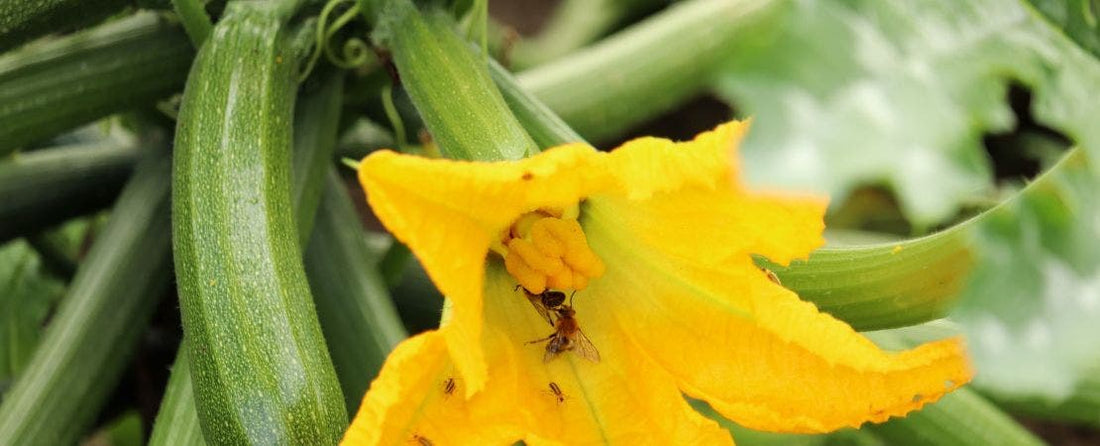
Understanding Hybrid Plants and Seeds: F1, F2, and Beyond
Share
HINT: Hybrid does NOT mean GMO
If you’ve spent any time shopping for seeds, you’ve probably come across the term “hybrid.” But what does that mean? Are hybrids the same as GMOs? And how do different types of hybrids affect your garden? Let’s break it down into easy to understand terms for gardeners.
What Is an F1 Hybrid?
An F1 hybrid is the first-generation offspring of two different parent plantsthat have been carefully selected for specific traits. These parent plants are often chosen for their disease resistance, productivity, size, flavor, or uniformity. The process of creating an F1 hybrid involves controlled cross-pollination, meaning breeders manually transfer pollen from one plant to another to ensure the desired traits are passed on.
Why Choose an F1 Hybrid?
- More vigorous plants– F1 hybrids often grow faster and stronger than their parent plants.
- Higher yield– Many F1 hybrids produce more fruits or vegetables per plant.
- Uniformity– If you want all your cabbages to be the same size, F1 hybrids are a great choice.
- Disease resistance– Many F1 hybrids are bred to resist common plant diseases, reducing the need for pesticides.
The trade-off? Seeds from an F1 hybrid won’t reliably produce plants identical to the parent. If you save seeds from an F1 hybrid, the next generation (F2) will likely have unpredictable traits. No problem if you buy seeds each year or appreciate a garden experiment.
What About an F2 Hybrid?
An F2 hybrid is the result of planting seeds saved from an F1 hybrid plant. However, because the F1 generation comes from two different parent plants, the F2 generation can have a mix of traits—some good, some not so good.
Should You Grow F2 Hybrids?
- Pros: If you enjoy experimenting and don’t mind variation in size, flavor, or disease resistance, F2 hybrids can be fun to grow.
- Cons: They are less predictable than F1 hybrids, and some may not have the strong growth or disease resistance of their parents.
For gardeners who want consistent results, F1 hybrids are usually the better choice. But if you enjoy saving seeds and experimenting, F2 hybrids might be worth exploring.

Other Types of Hybrids
Beyond F1 and F2 hybrids, there are other types of hybrids used in gardening and farming. Here are some key ones:
Open-Pollinated (OP) Plants
These are plants that pollinate naturally through wind, insects, or self-pollination. Open-pollinated plants breed true, meaning their seeds will reliably produce plants with the same traits as the parent.
- Best for: Gardeners who want to save seeds and grow the same crop year after year.
- Example: Heirloom tomatoes, many beans, and lettuce varieties.
Heirloom Varieties
Heirlooms are open-pollinated plants that have been passed down for generations. They are prized for their flavor, uniqueness, and historical significance.
- Best for: Those who appreciate rich flavors and want to preserve plant diversity.
- Example: Brandywine tomatoes, Cherokee Purple tomatoes, and Blue Hubbard squash.
Triploid Hybrids
Some hybrids, like triploid watermelons, are bred to be seedless. This is done by crossing a diploid (2 sets of chromosomes) plant with a tetraploid (4 sets of chromosomes) plant to create a sterile offspring.
- Best for: Gardeners who want seedless fruits.
- Example: Seedless watermelons.
Grafted Plants
Grafting involves joining the rootstock of one plant to the top (scion) of another. This is commonly done with fruit trees and tomatoes to provide stronger roots or disease resistance.
- Best for: Those who want more disease-resistant or drought-tolerant plants.
- Example: Grafted tomatoes, apples, and roses.
Are Hybrids the Same as GMOs?
No! Hybrid plants are created through natural crossbreeding, which can occur in nature. GMOs (Genetically Modified Organisms), on the other hand, involve altering the plant’s DNA in a laboratory by inserting genes from other organisms (such as bacteria or other plants) to create specific traits.
While GMOs are common in large-scale agriculture, they are not typically found in home garden seeds. If you’re buying seeds labeled as hybrids, they are not genetically modified.
Tips for Choosing the Best Hybrid for Your Garden Goals
It depends on your gardening goals:
- If you want consistency, disease resistance, and high yields, go with F1 hybrids.
- If you like experimenting, try growing F2 hybrids and saving seeds.
- If you want to preserve tradition and unique flavors, choose heirloom or open-pollinated varieties.
- If you want seedless fruits, look for triploid hybrids.
- If you need stronger plants, consider grafted varieties.
Understanding the different types of hybrids can help you make the best choices for your garden. Whether you prioritize disease resistance, yield, or sustainability, there’s a hybrid (or open-pollinated) option that fits your needs.